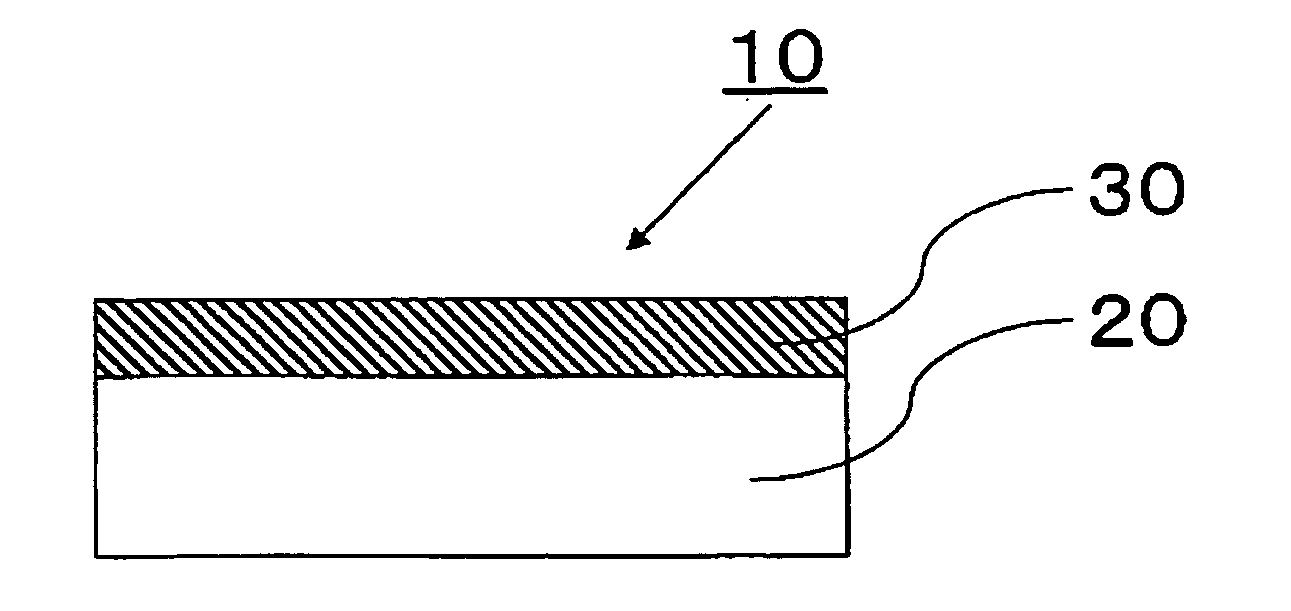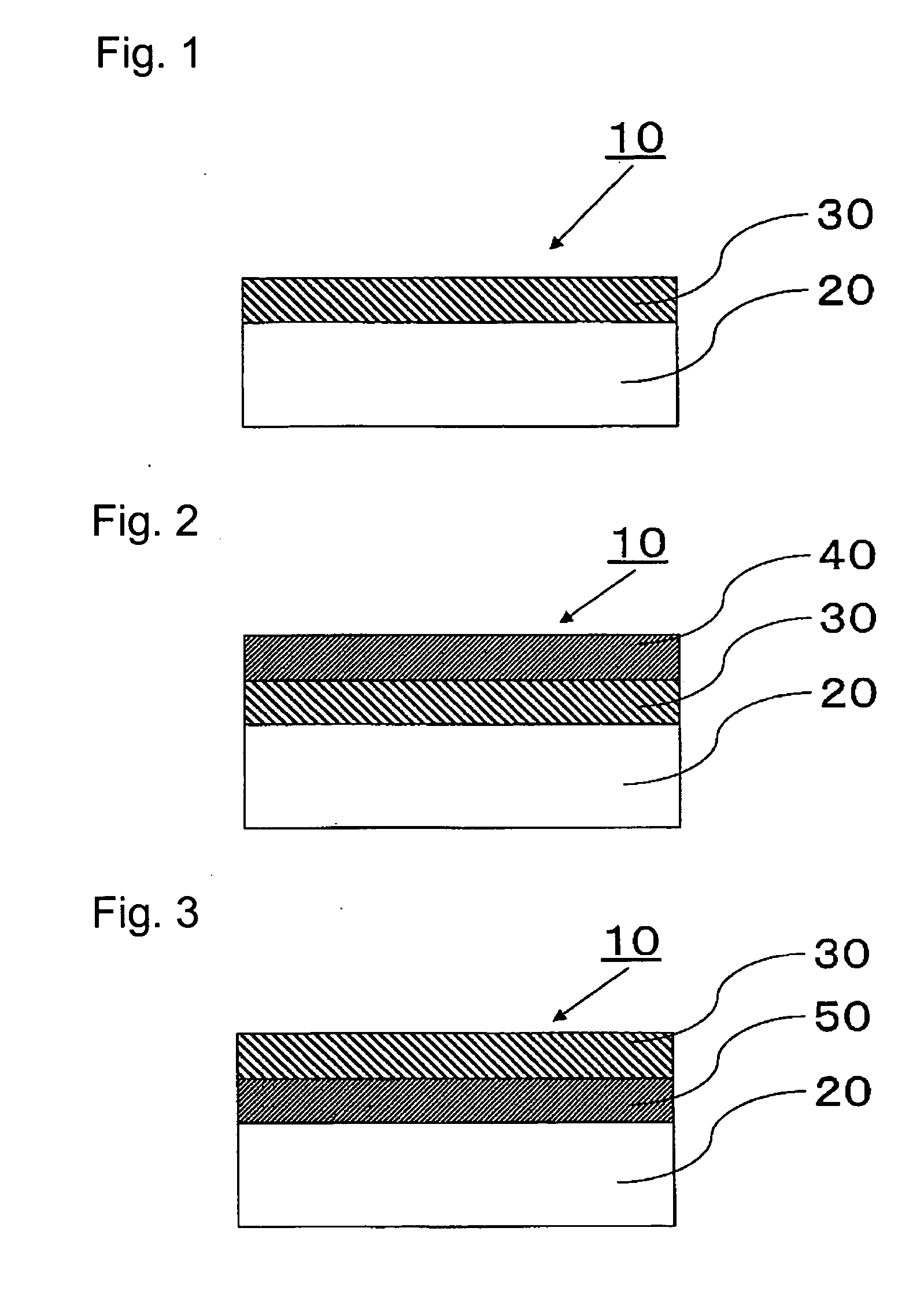Ti oxide film having visible light-responsive photocatalytic activites and process for its production
a photocatalytic activation and visible light technology, applied in the field of ti oxide films, can solve the problems of large amount of excitation light that cannot be utilized, low light absorption in visible light range, and high installation cost, and achieve excellent transparency and antifogging properties
- Summary
- Abstract
- Description
- Claims
- Application Information
AI Technical Summary
Benefits of technology
Problems solved by technology
Method used
Image
Examples
example 1
[0087] In a vacuum chamber, the high purity TiOx (x=1.984) target (target area: 200 mm×70 mm) and a glass substrate (Corning #1737, 1.1 mm in thickness, visible light transmittance: 91% (according to JIS R3106 (1998), the same applies hereinafter)) were set, and the chamber was evacuated until the residual gas pressure became not higher than 1×10−3 Pa. Then, argon gas was introduced to 3.9 Pa, followed by DC sputtering (discharge power=750 W) to obtain a Ti oxide film-coated glass substrate. The thickness of the Ti oxide film at that time was 50 nm. The film thickness was measured by a contact type film thickness measuring apparatus (Dektak, manufactured by Veeco), and the same applies in the following Examples. During the deposition, no heating of the substrate was carried out. Then, it was fired at 650° C. for 10 minutes in the atmospheric air to obtain a Ti oxide film-coated glass. Here, it is considered that under such a firing condition, the surface of the Ti oxide film is TiO2...
example 2
[0112] A Ti oxide film-coated glass substrate was obtained in the same manner as in Example 1 except that the thickness of the Ti oxide film in Example 1 was changed to 100 nm, and evaluated in the same manner as in Example 1. The conditions for forming the film-coated glass substrate are shown in Tables 1 and 2, and the evaluation results are shown in Table 3.
example 3
[0113] A Ti oxide film-coated glass substrate was obtained in the same manner as in Example 1 except that the thickness of the Ti oxide film in Example 1 was changed to 200 nm, and evaluated in the same manner as in Example 1. The conditions for forming the film-coated glass substrate are shown in Tables 1 and 2, and the evaluation results are shown in Table 3.
PUM
| Property | Measurement | Unit |
|---|---|---|
| Temperature | aaaaa | aaaaa |
| Fraction | aaaaa | aaaaa |
| Percent by mass | aaaaa | aaaaa |
Abstract
Description
Claims
Application Information
 Login to View More
Login to View More - R&D
- Intellectual Property
- Life Sciences
- Materials
- Tech Scout
- Unparalleled Data Quality
- Higher Quality Content
- 60% Fewer Hallucinations
Browse by: Latest US Patents, China's latest patents, Technical Efficacy Thesaurus, Application Domain, Technology Topic, Popular Technical Reports.
© 2025 PatSnap. All rights reserved.Legal|Privacy policy|Modern Slavery Act Transparency Statement|Sitemap|About US| Contact US: help@patsnap.com


